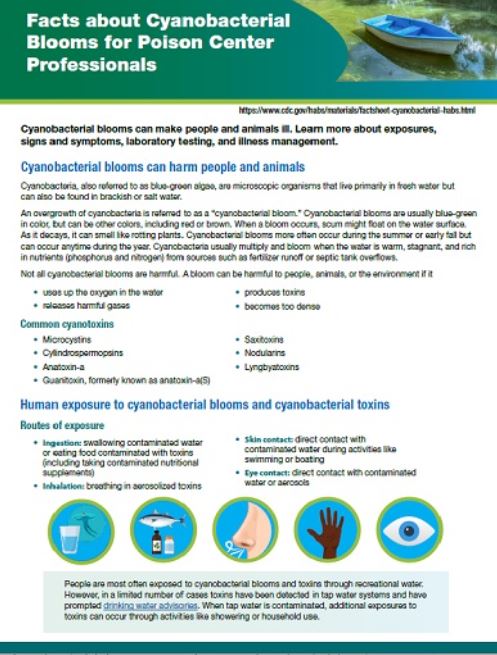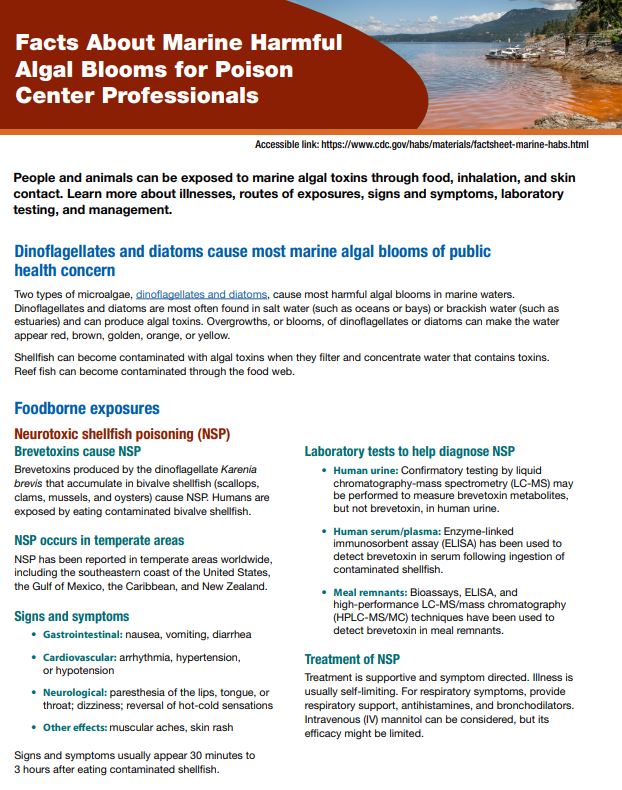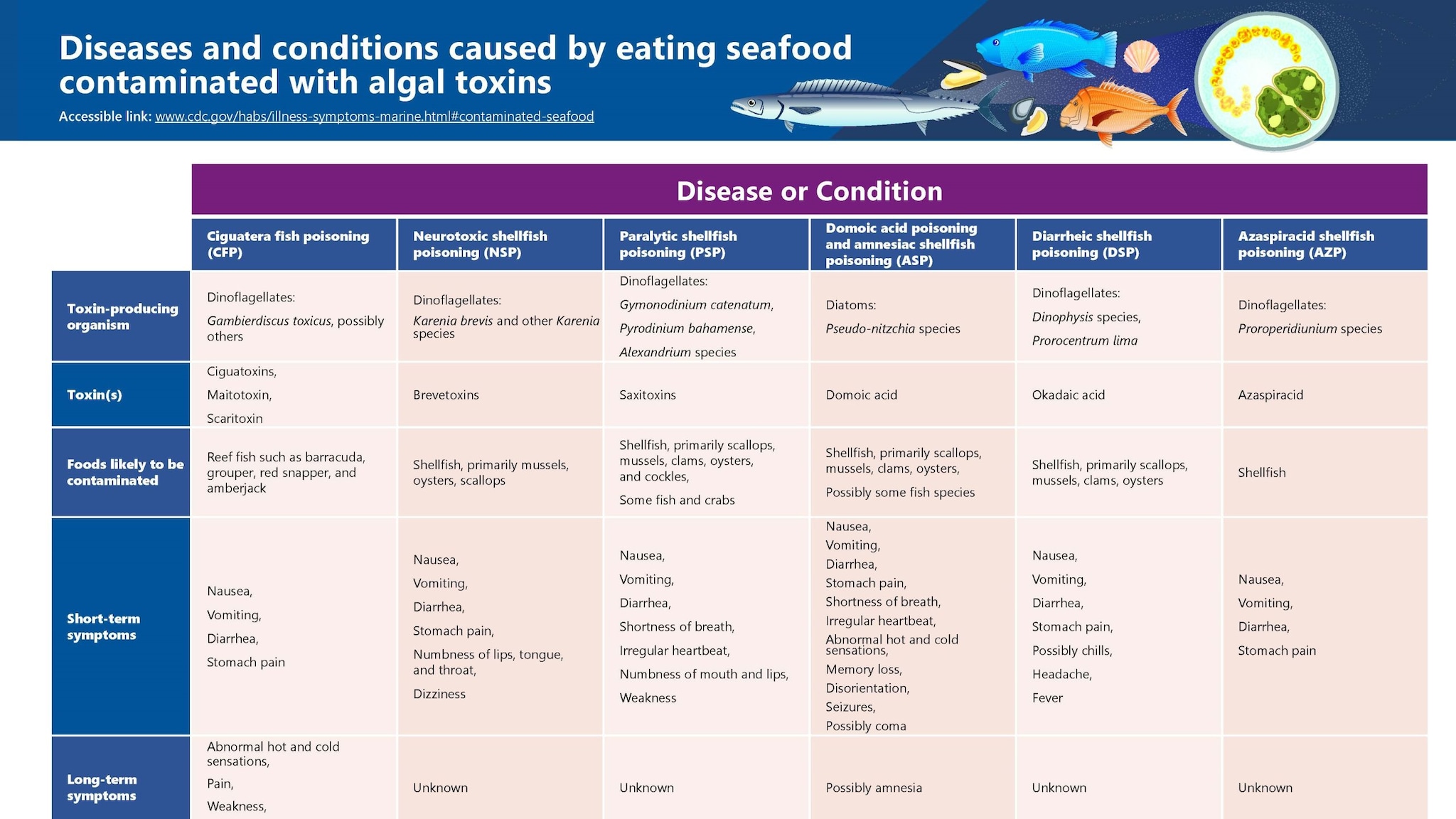Key points
- Treatment of harmful algal bloom-associated illnesses is supportive and symptom-directed.
- There are no known antidotes to harmful algal bloom toxins.

Treatment options
Cyanobacteria or cyanotoxin-associated illnesses
Cyanobacteria or their toxins (cyanotoxins) cause most illnesses from exposure to harmful algal blooms in lakes, rivers, or other bodies of fresh water.
Treatment is supportive and symptom-directed. There are no specific antidotes for cyanotoxins or specific treatments for human illnesses caused by cyanobacteria or their toxins.
Ingestion of contaminated water or food
The patient can stop the exposure by avoiding the contaminated water or food. If needed, replenish their fluids and electrolytes. You can consider activated charcoal if the patient arrives within 1–2 hours after a toxic ingestion, assuming no contraindications. Provide other supportive and symptom-directed care, as needed.
Inhalation of aerosolized toxins
The patient can stop the exposure by moving to a noncontaminated environment (for example, away from a body of water with a harmful algal bloom). Provide supportive care for any respiratory symptoms.
Skin contact with contaminated water
Patients should remove contaminated clothing and jewelry (for example, clothing or jewelry they wore into water with a harmful algal bloom). Patients should also wash their skin with soap and water for 10–15 minutes. You may consider antihistamines or steroids to treat symptoms caused by skin contact with contaminated water.
Eye exposure to contaminated water
If the patient is wearing contact lenses, they should remove their lenses. Irrigate the eyes with normal saline for at least 15 minutes. Refer the patient to an ophthalmologist if eye symptoms persist after thorough irrigation.
Foodborne illnesses and conditions
Most foodborne illnesses caused by harmful algal blooms are the result of eating contaminated seafood from oceans, bays, or other bodies of salt water. Treatment is supportive and symptom-directed for the following foodborne illnesses caused by harmful algal bloom toxins. There are no antidotes to the toxins that cause these illnesses.
Neurotoxic shellfish poisoning
Illness is usually self-limiting. For respiratory symptoms, provide respiratory support, antihistamines, and bronchodilators. You may consider intravenous (IV) mannitol, but its efficacy might be limited.
Ciguatera poisoning
You can use IV mannitol within 48–72 hours after exposure. There is variable evidence regarding IV mannitol's efficacy. Patients should avoid foods that trigger pruritis, including alcohol, chocolate, nuts, and caffeine. You can use tricyclic antidepressants for chronic neurologic symptoms, with variable efficacy.
Amnesic shellfish poisoning
You can provide respiratory support if required.
Diarrhetic shellfish poisoning
You may consider antiemetics, fluids, and electrolyte replacement.
Paralytic shellfish poisoning
Provide respiratory support in the event of neurotoxicity and respiratory paralysis.
Azaspiracid shellfish poisoning
Provide supportive medial care as needed.
Resources
Food Poisoning from Marine Toxins | CDC Yellow Book



